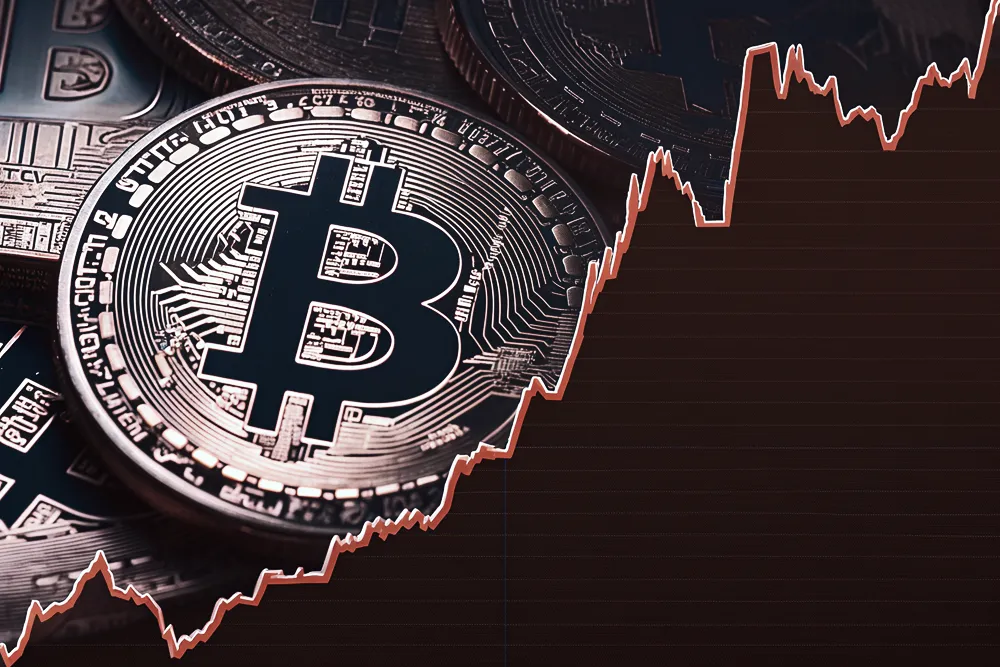Original Title: Podcast: Building the $500MM+ Binance-based Digital Asset Treasury, with BNB Network CEO David Namdar
Original Author: MATT LOW, Fintech Blueprint
Translated by: Peggy, BlockBeats
In this episode, Lex speaks with David Namdar, CEO of BNB Network Company, starting from his early experiences with Bitcoin in 2012, all the way to co-founding Galaxy Digital and now leading BNB Network Company. Namdar reflects on the evolving interaction between traditional public markets and crypto assets, pointing out how regulatory hurdles and speculative cycles have shaped market participation.
He further analyzes the rise of Digital Asset Treasury (DAT) companies, particularly emphasizing how MicroStrategy, under Michael Saylor's leadership, pioneered this model: converting $400 million in cash entirely into Bitcoin, which now has a Bitcoin holding scale exceeding $75 billion.
They then discuss Binance's role in this ecosystem: with 290 million users, accounting for about 40% of global crypto trading volume, and through a quarterly token burn mechanism of up to $2 billion, making BNB a deflationary asset.
Finally, Namdar shares why he chose to focus on BNB rather than Bitcoin in the new DAT project, providing U.S. investors with an asset exposure that has been severely undervalued yet is highly powerful.
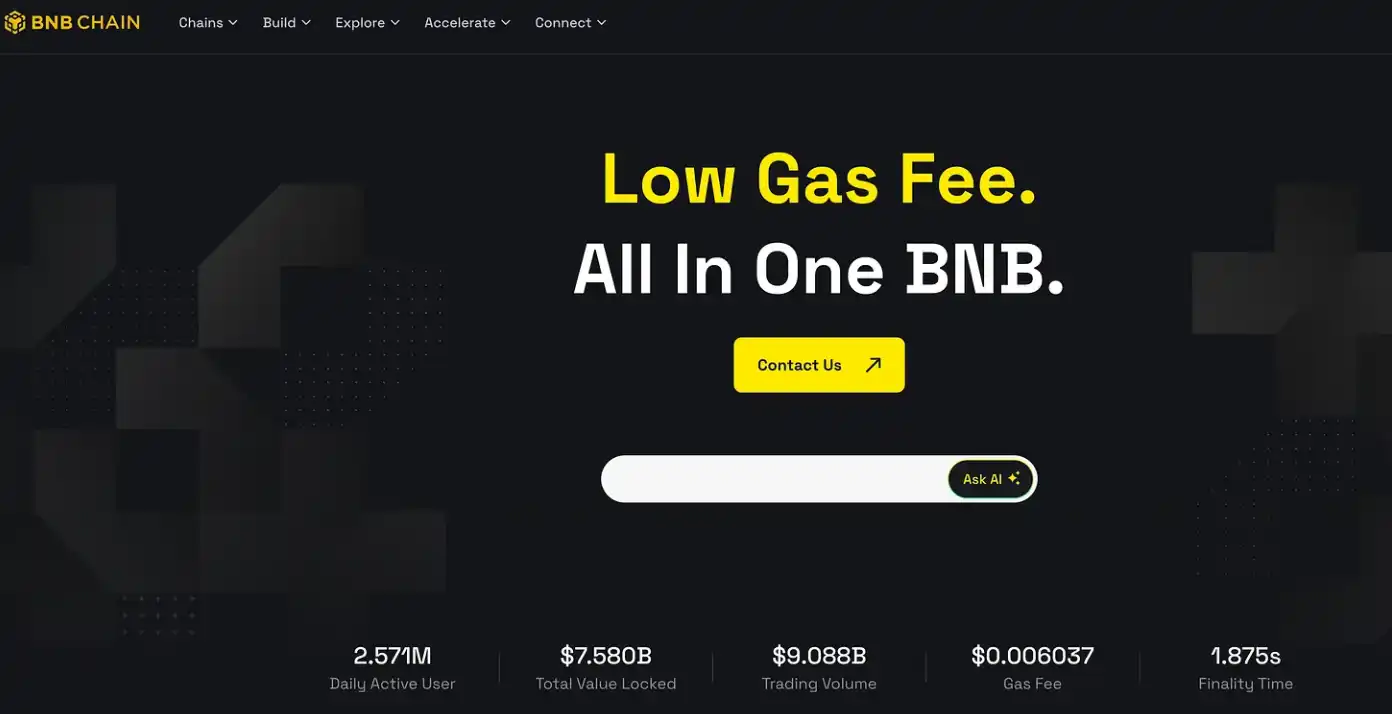

TL;DR
Digital Asset Treasuries are becoming "disguised crypto ETFs"
Public companies like MicroStrategy and MetaPlanet are transforming their balance sheets into crypto asset holdings, providing indirect exposure to assets like Bitcoin, Ethereum, and BNB. With limited ETF or direct investment channels, this model is attracting billions of dollars in inflows, becoming a new investment entry point.BNB has massive global usage but is severely "undervalued" in the U.S. market
With 290 million users and quarterly token burns of up to $2 billion, BNB is one of the most widely used tokens globally. However, it is almost inaccessible to U.S. investors, leading to a significant disconnect between market perception and asset demand, creating potential opportunities for public market investment tools around BNB.Crypto markets often rely on misunderstood and unsustainable incentive mechanisms
Namdar points out that the demand expansion in past cycles came more from staking rewards and nominal returns rather than true value creation. A lack of economic and financial literacy exacerbates the chase for "surface returns," obscuring underlying fundamentals and harming long-term sustainability.
Who is David Namdar?
David Namdar's career trajectory to becoming CEO of BNB Network connects nearly every key stage of the crypto industry's development. Starting with traditional finance roles at UBS Hong Kong and Millennium Management, he discovered Bitcoin in 2011 and became one of the early evangelists, attending New York's earliest Bitcoin meetups in 2012-2013.
In 2014, he co-founded SolidX Partners, submitting the world's second Bitcoin ETF application just weeks after the Winklevoss brothers filed theirs. Later, in 2017, he partnered with Michael Novogratz to co-found Galaxy Digital, successfully listing it in Canada.
After leaving Galaxy, he founded Coral DeFi, co-founded NFT.com, and became an active angel investor while consulting for several Digital Asset Treasury companies. With a unique combination of experience spanning Wall Street trading, early crypto entrepreneurship, and institutional-level digital asset management—accumulating over a decade of experience from Bitcoin's nascent stage to the institutional wave of crypto—he is the ideal candidate to lead BNB Network in advancing its ambitious $500 million treasury strategy in 2024.
Dialogue Excerpt
Lex Sokolin: Hello everyone, welcome to today's conversation. I'm very pleased to invite David Namdar. He is the CEO of BNB Network Company and one of the original co-founders of Galaxy Digital, as well as an early crypto entrepreneur and investor. David, welcome to our conversation.
David Namdar: Thank you, Lex, I'm glad to be here.
Career Development
Lex Sokolin: Let's start with a quick recap: how did you enter the crypto space? What prompted you to become a co-founder of Galaxy? What was the experience like in those early years?
David Namdar: Actually, that wasn't my first chapter in the crypto industry. The real starting point should be that my career began at UBS in Hong Kong.
At that time, I was responsible for covering the entire Asian market and trading globally. Later, I returned to New York to work at Millennium, one of the largest hedge funds in the world, and began trading in almost all stock markets. It was then that I realized that Asians seemed to have an advantage in "currency": ordinary people in Hong Kong, Tokyo, and Shanghai encounter and think about multiple currencies daily, while in the West, people only need to care about the dollar or euro, and everything operates too smoothly.
It was also at Millennium that I first encountered Bitcoin. I started attending some of New York's earliest Bitcoin meetups around 2012-2013, trying to persuade my colleagues in hedge funds and banks to pay attention to this thing. But when I saw their resistance, I chose to leave. I founded my first company in this field at the end of 2013 or early 2014.

David Namdar: That company was SolidX Partners. Our intention was to create a boutique investment bank focused on digital assets. At that time, we attempted to launch a Bitcoin ETF—this was the world's second Bitcoin ETF application, second only to the Winklevoss brothers. We also tried to innovate on the derivatives side, using total return swaps, and published some of the earliest Bitcoin and digital asset research reports, analyzing them as an institutional asset class.
All of this happened between 2014 and 2015, and to be honest, it was indeed a bit early. Especially after the Mt. Gox collapse in 2013, many people were still skeptical about this field, feeling that the risks were too high and there were too many problems, with some believing that the government would directly shut down Bitcoin, and that Bitcoin could never become what it is today.
A few years later, I met Mike Novogratz. At that time, he had just left Fortress and was focusing on managing his family office. He had made several investments in this field, including Ethereum and Ripple, which were introduced to him through Dan Morehead of Pantera, whom I knew from my time at Fortress.
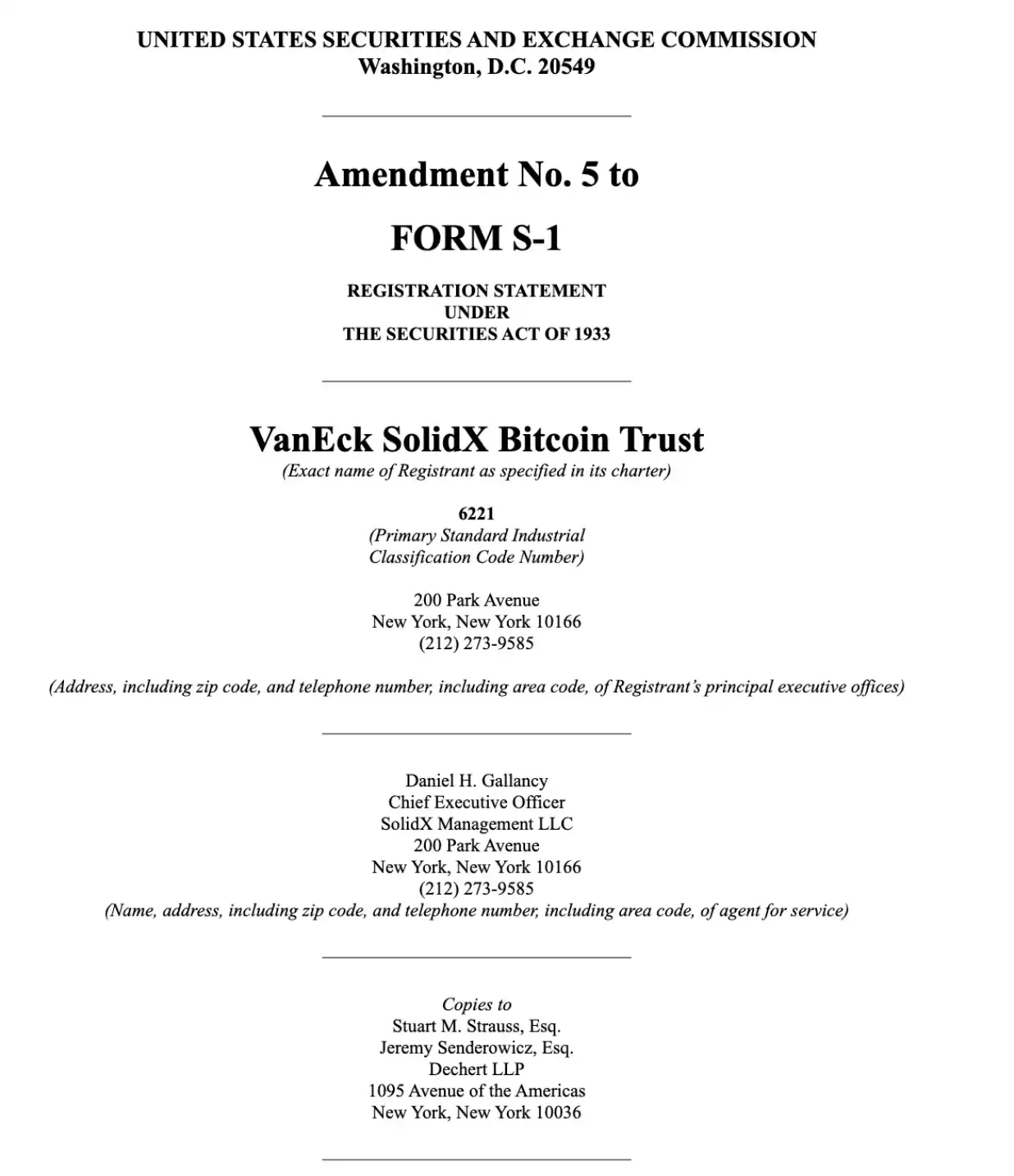
David Namdar: So I started managing all digital assets for him, and honestly, I continued to do what I was best at: creating chaos, expanding opportunities, and gradually dragging everyone into the crypto world. In the family office, I was basically "fighting with everyone," constantly pushing him and the entire team towards crypto, getting deeper and deeper, which sowed the seeds for later co-founding the hedge fund and business, which ultimately became Galaxy Digital.
After that, I pushed for us to take the company public. But at that time, the U.S. regulatory environment did not allow us to go that route, so we turned our attention to Canada. Several crypto mining companies had already gone public in Canada, and the local market was more open to crypto assets. Some Canadian investors even compared crypto mining to traditional gold, silver, or other commodity mining, making them more willing to accept this asset type earlier.
So we became one of the first teams to bring "truly diversified crypto investment banking and crypto business" to the public market. You could say this public company is an amplified and evolved version of my first company, SolidX.

Lex Sokolin: That's a lot of action completed in a very short time, thank you for sharing. I'm actually very interested in the public market because it somewhat relates to the topic of digital asset treasuries. What was your motivation for choosing to go public? Typically, companies go public to provide liquidity for shareholders, but for a company like Galaxy, why did you decide to list on a Canadian exchange at that time? Additionally, how did you view the market structure of that exchange? After all, it wasn't Nasdaq; was the liquidity sufficient at that time? Was that important? What were the key considerations?
David Namdar: That's a great question. Let me go back to SolidX. One challenge SolidX faced was that after the financial crisis, we attempted to launch a Bitcoin ETF, aiming to create a product that retail investors could trade while institutional investors could manage subscriptions and redemptions on their ETF desks.

David Namdar: The issue at that time was that the market was still too early, and people did not see the opportunity; instead, they were overly concerned about the risks of Bitcoin as the underlying asset for the total return swaps we were trying to create. Another obstacle was ISDA. This is an internationally recognized standard for derivative contracts, and banks were reluctant to deal with a small startup on these ISDA agreements.
If SolidX had been able to go public earlier, assuming the market environment and opportunities allowed, these issues might have been resolved, and SolidX could have successfully brought the product to market.
Returning to Galaxy Digital, when we thought about the company's layout in trading, investment banking advisory, and other businesses, as well as the different sectors we could expand into in the future, we realized that we needed to have credibility in the public market while being able to leverage public market capital to drive business growth.

David Namdar: Now, nearly ten years later, we see more and more companies able to raise significant funds in the private market. But at that time, whether it was to gain market recognition, attract clients, and do business with large institutions, or to raise funds through the public market, these two points were core factors driving our decision-making.
Lex Sokolin: Next, please reflect on the following years, especially the situation in the U.S. public market. I want to explore how the market's attitude has changed from fintech to digital assets, to cryptocurrencies and DeFi. What is the comfort level of people regarding asset holding and operations, as well as intergenerational differences? At the same time, what is the overall temperature of the U.S. public market towards these assets? This is a big question; I think of the SPAC craze in 2021 and 2022, the wave of fintech companies and IPOs, and the early stages of crypto trading platforms and brokers trying to enter the capital markets. Can you outline the evolution of the U.S. capital market regarding this asset class and related fields?
David Namdar: Of course, this is also a topic I enjoy reflecting on. I remember our first meeting was probably between 2016 and 2018, when the market was at a critical stage of evolution. Unfortunately, one of the core factors hindering this process was the heavy regulatory environment. Many industry insiders, including myself, believed that the BitLicense regulation introduced by the New York Department of Financial Services (NYDFS) and Ben Lawsky's policies severely slowed and hindered innovation, causing many crypto companies and capital to avoid New York and even the U.S. This impact was very evident in 2017, 2018, and 2019, and one could say it has continued to this day.
During the ICO boom in 2017 and 2018, there were indeed some companies, like Galaxy and some mining companies, that successfully went public, but the overall environment remained challenging.

David Namdar: At that time, Bitcoin and Ethereum had almost become the "financing currencies" of the entire digital asset world. People had to buy Bitcoin or Ethereum to participate in various ICOs and the constantly emerging projects in the crypto ecosystem. As a result, many companies that raised a large amount of Bitcoin in ICOs chose to hold these Bitcoins, and as the price of Bitcoin rose, their paper gains also increased, with Ethereum following suit.
Therefore, ICO projects and companies accepting investments effectively became speculators of the underlying assets. As more people bought Bitcoin and Ethereum to participate in these projects, and these projects appeared profitable on paper, a "reflexivity" effect was created, further leveraging the market. Most of these activities occurred in the private market, with almost no similar situations in the public market.
By around 2021, with the DeFi boom, the situation began to change. People no longer entered the crypto world solely through Bitcoin and Ethereum; instead, various new channels emerged, allowing investors to invest through stablecoins.
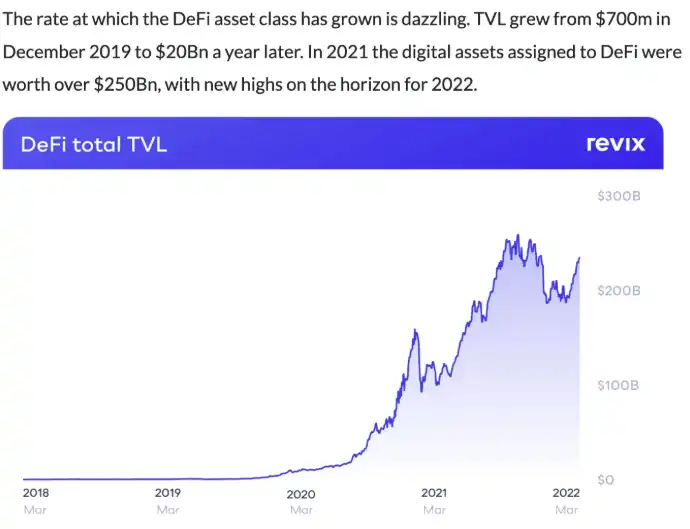
David Namdar: At that time, Tether's scale began to expand rapidly, Circle also gradually became popular, and other large crypto assets rose as well, allowing people to enter the crypto world through these channels. Meanwhile, a similar leverage effect appeared in the market: new projects incentivized users to lock up tokens or assets, whether Bitcoin, Ethereum, or stablecoins, requiring them to stake into these new protocols.
But one core issue is that many of these so-called "yields" are actually inflation disguised as returns. If you and I launch a project, we hold 50% of the token supply, sell 10% to the market, and keep 40% as rewards, then as users gradually receive this 40% through "yields," we early holders will continuously sell tokens to new buyers while they wait for their returns.
Lex Sokolin: I have to interrupt because this has always struck me as incredible. High school economics 101 teaches the difference between nominal interest rates and real interest rates, and I feel that if everyone truly understood the difference between nominal returns and real returns, many crypto projects might not even exist.

David Namdar: I think this is one of the aspects that fascinates me about the crypto market. Regardless of what industry people came from, once they enter the crypto space, they must grow and evolve. For example, if someone comes from a hedge fund or traditional market background, they suddenly need to learn about early-stage tech investing, understand the global regulatory environment, and master technology in a completely new way. If they are lawyers, they not only need to understand the law but also grasp the market, early and late-stage investing, and even delve deeper into security and technology than ever before.
This cross-disciplinary learning is positive, but at the same time, each cycle sees a large number of misunderstandings about economics, with many people unable to distinguish between true technological innovation and mere hype or pure marketing.
Lex Sokolin: This also raises a question: the attitude of the U.S. public market towards crypto companies and fintech companies after the pandemic. After two years of lockdown, everyone was online, speculation was high, everything was digital, and business fully shifted to Amazon rather than physical stores. People were ready to embrace these changes; you even saw the emergence of the GameStop Reddit army, with a lot of capital waiting to be deployed, but then all of this quickly disappeared. What happened?
David Namdar: During this period, the frenzy around GameStop and Reddit overlapped with the excitement in the crypto market. I remember Coinbase's IPO; the heat and momentum were almost identical to that of Robinhood's listing.
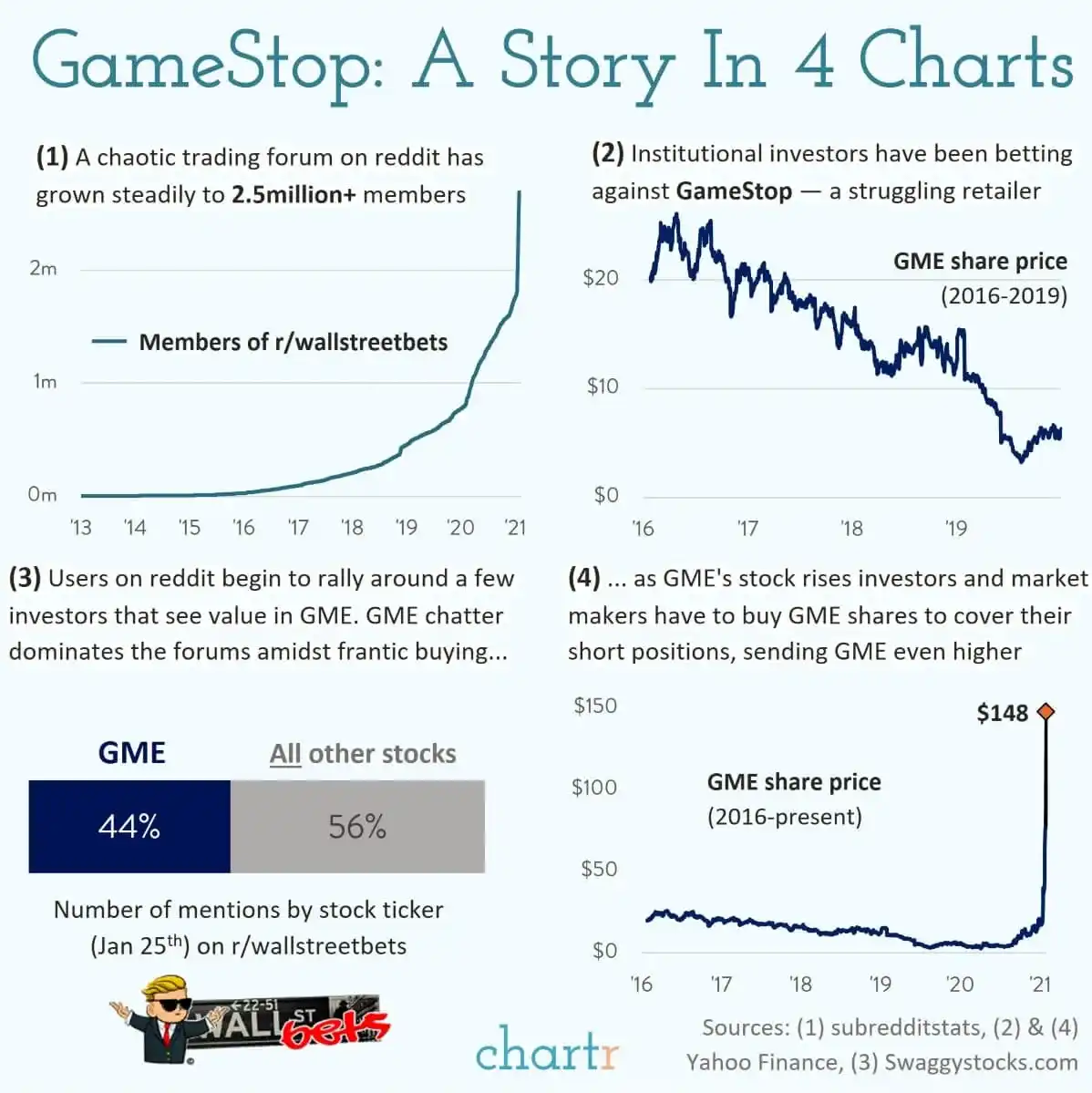
David Namdar: All of this ultimately converged. I think the most significant point during that period was that, aside from the crypto market, this was actually the first time retail investors truly tried to take control in the capital markets and gain a greater voice in investments. In the crypto market, a similar trend emerged as part of a longer-term, grander vision—removing intermediaries, taking control of personal finance, achieving monetary sovereignty, and idealizing the future forms of currency and finance.
But the reality is that they still faced trading fees, regulatory barriers, and market structure obstacles. Many even believed that this game was still "manipulated." If I remember correctly, Robinhood suspended buying operations for some popular concept stocks and "meme stocks" multiple times due to pressure from back-end funding and institutions.
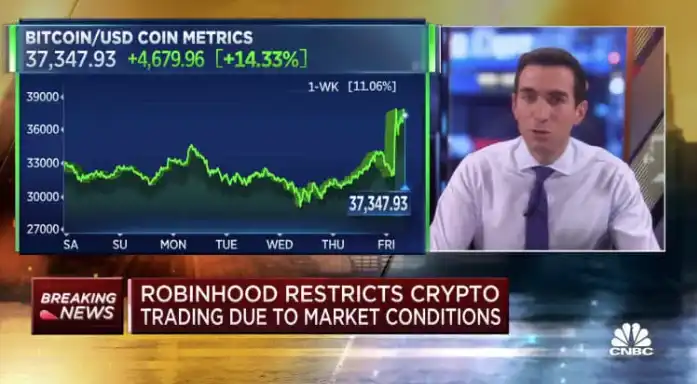
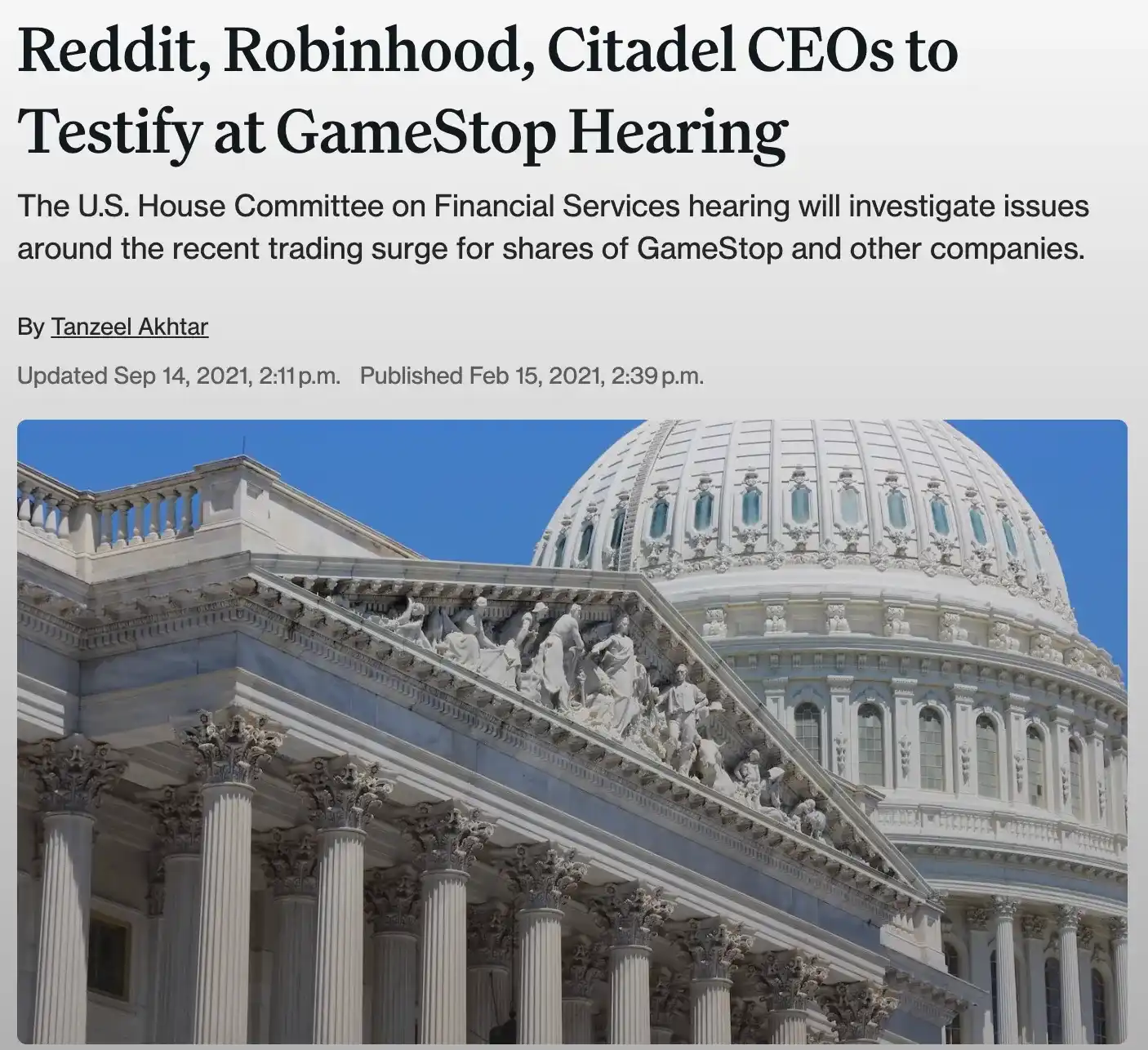
David Namdar: Although that incident led to a brief market crash, it also further strengthened people's confidence in the crypto market because, in the crypto world, there are no large institutions manipulating the rules of the game.
Digital Asset Treasuries
Lex Sokolin: Next, let's talk about Digital Asset Treasuries. First, define what they are, how they emerged, and then discuss the current market landscape.
David Namdar: To explain this concept, we need to take a step back. I usually start talking about Michael Saylor, but this time I want to go back a bit further. In fact, one or two companies were early pioneers of this trend, and I still keep in touch with some of them, like Charles Allen, who operated BTCS, a company that has now transformed and is seen as a representative of Ethereum treasuries.
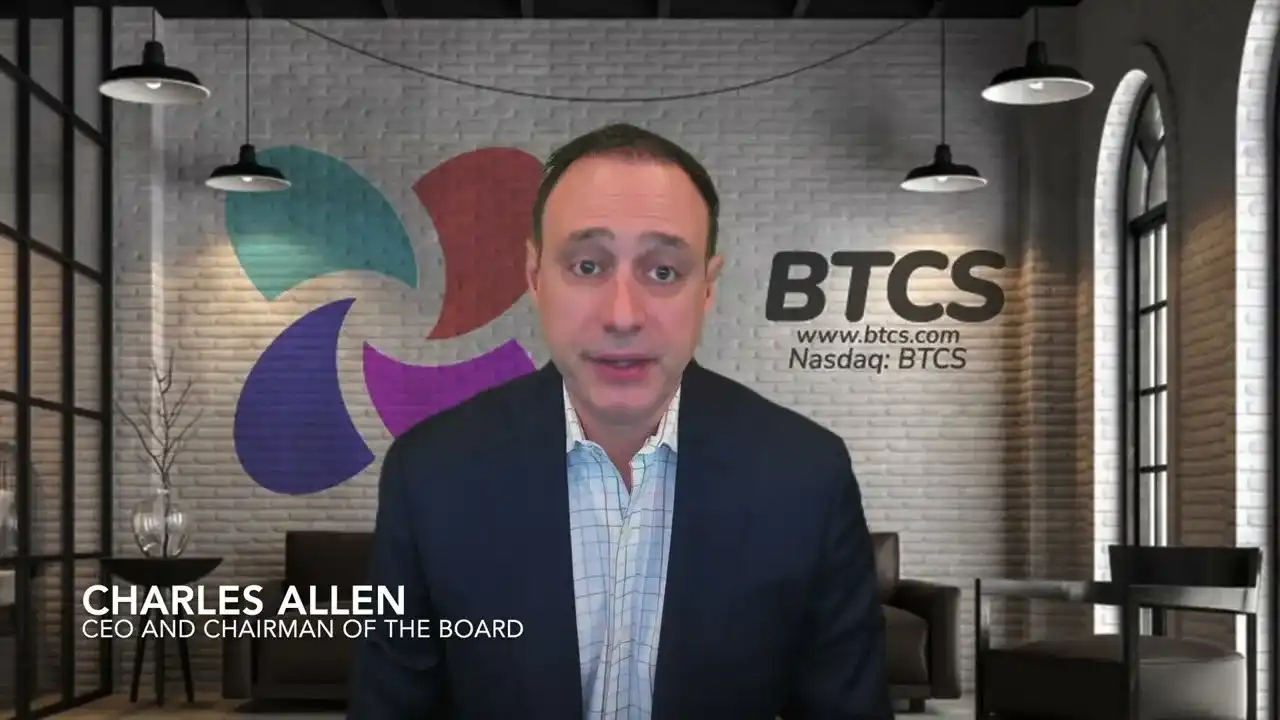
David Namdar: He went public in 2014 or 2015 and was one of the first companies to hold digital assets on a public company's balance sheet. In contrast, other mining companies typically sold their mined Bitcoin or Ethereum immediately to pay expenses and recorded the remainder as income.
Going back five years, we have Michael Saylor's story. He spent most of his career running a traditional tech company focused on software, but the company was struggling to grow and had about $400 million in cash on its balance sheet. Later, he was convinced of the value and potential of Bitcoin, and there is an interesting story behind this: as far as I know, he sold the domain voice.com to Brendan Blumer—who is a key figure in Block.one and the EOS ICO. When Saylor saw that the transaction amount was as high as $30 million, he realized that there must be greater opportunities in the crypto world.
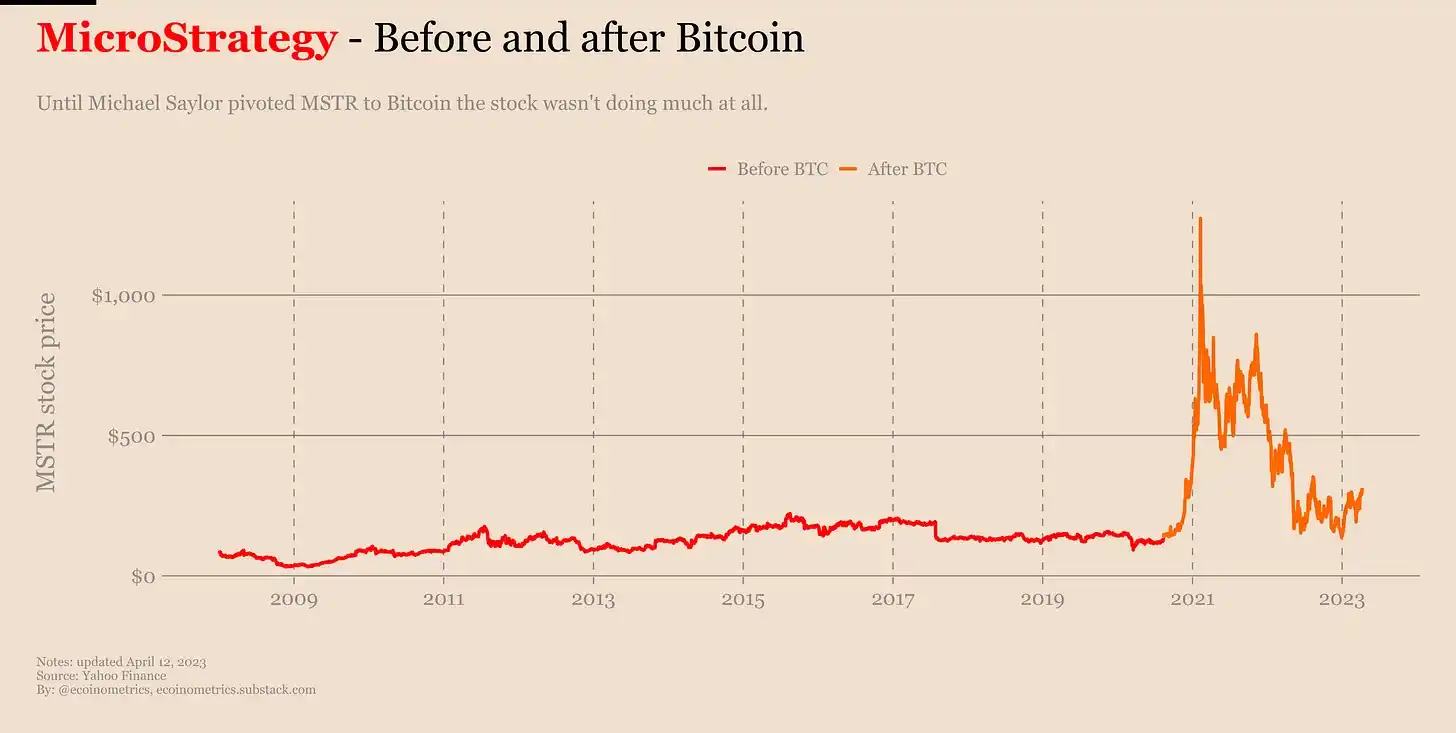
David Namdar: His thought at that time was, "If these people in the crypto space can have so much capital, there must be an opportunity here." This led him to reevaluate the potential of Bitcoin and ultimately commit fully, in an incredible way. He converted the entire $400 million cash on the company's balance sheet into Bitcoin, believing that Bitcoin was more powerful and robust than fiat currency. He had intense debates with the board and overcame various regulatory obstacles. Eventually, when he started purchasing Bitcoin, the company's stock price experienced a premium, and the market reacted positively, with investors very excited.
Subsequently, he continuously sold more shares at a premium to raise funds to buy Bitcoin, creating a "sell stock to buy Bitcoin" cycle. Furthermore, he issued convertible bonds and other financial products, with the sole purpose of accumulating more Bitcoin. This process effectively initiated the financialization of Bitcoin.
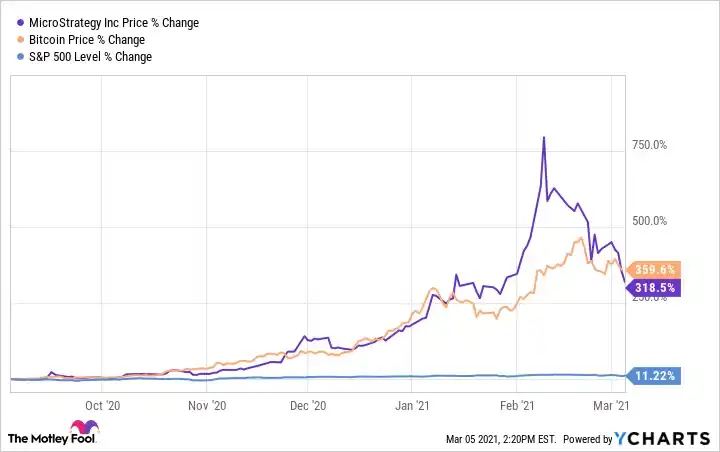
David Namdar: Over the past five years, he has successfully accumulated Bitcoin worth over $75 billion, and the company's market capitalization has now exceeded $100 billion. Due to his achievements and holding over 3% of the global Bitcoin supply, this strategy quickly sparked imitation and became an industry trend.
He not only executed this strategy himself but also actively promoted the idea by hosting "Bitcoin for Corporates" events, teaching corporate finance executives, CFOs, and small business owners about the advantages of Bitcoin over fiat currency. He even entered large public companies and private enterprises to popularize the concept of digital asset treasuries.
In the past year or two, this trend has spread not only in the U.S. but also to multiple markets globally. Currently, there are over 100 digital asset treasury companies focused on accumulating Bitcoin, and more than a dozen companies have begun to realize that holding other significant crypto assets is also valuable.
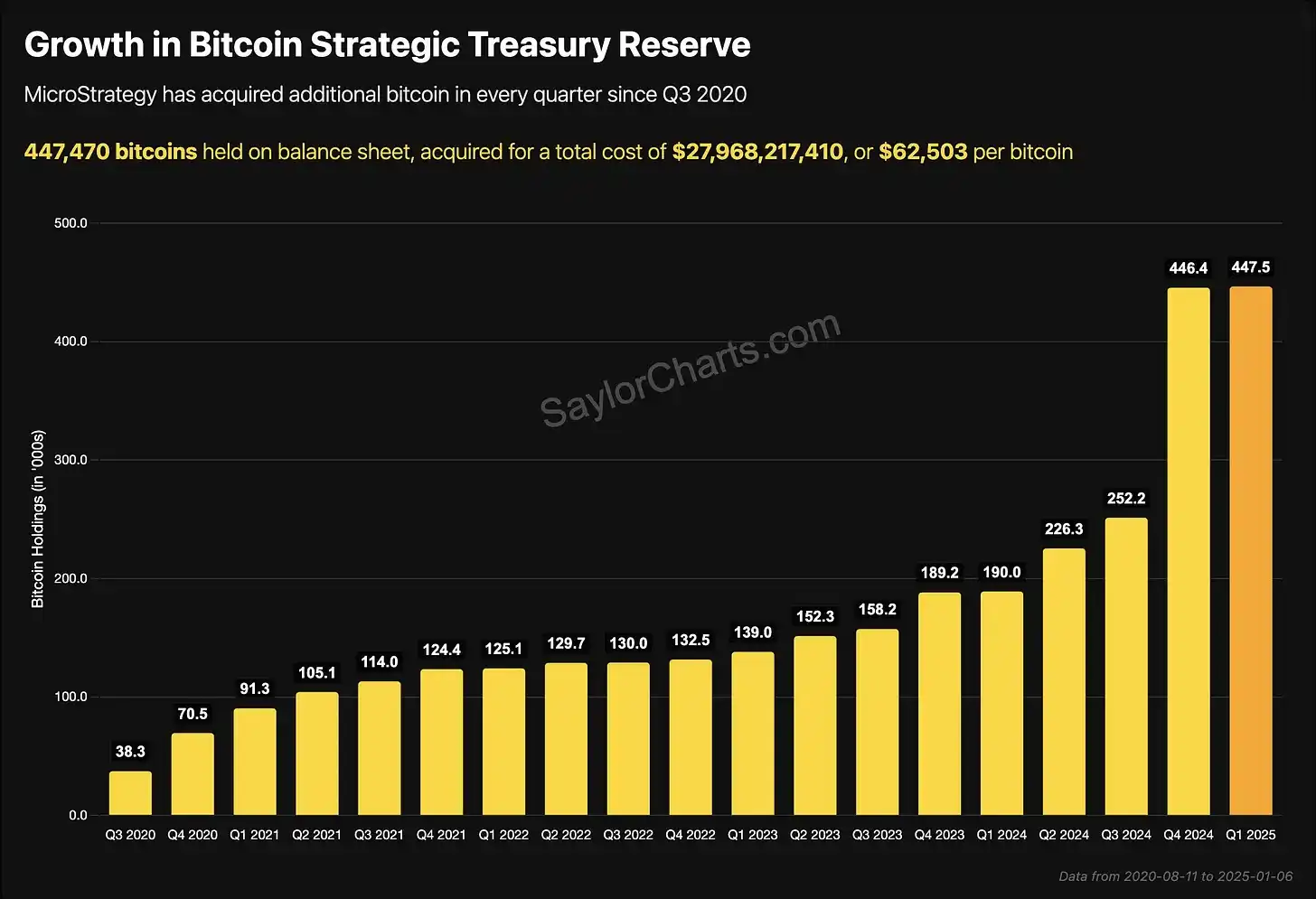
David Namdar: Now, he has accumulated Bitcoin worth over $75 billion in the past five years, and the company's market capitalization has surpassed $100 billion. Due to his successful control of about 3% of the global Bitcoin supply, this strategy quickly sparked imitation and became an industry trend. He not only executed this strategy himself but also actively promoted it, hosting "Bitcoin for Corporates" events to teach corporate finance executives, CFOs, and small business owners about the advantages of Bitcoin over fiat currency. Today, this trend has spread not only in the U.S. but also to multiple markets globally. Currently, there are over 100 digital asset treasury companies focused on accumulating Bitcoin, and more than a dozen companies have begun to explore Ethereum, Solana, and even other core crypto assets like BNB.
Lex Sokolin: Returning to Michael Saylor's operations, especially the early market capitalization relative to net asset value premium, what financial tools did he use to achieve such rapid growth?
David Namdar: Certainly. I am not sure exactly when he started using convertible bonds, but it is certain that during 2021 and 2022, his business faced some vulnerabilities. I remember he even borrowed funds through DeFi products on-chain because the market was concerned about his Bitcoin liquidation price; if it dropped to $3,000 or $5,000, he might be forced to liquidate.
His strategy included using the ATM (At-the-Market) issuance mechanism to sell shares for fundraising when the stock price was at a premium, and this premium lasted much longer than the market expected, usually exceeding the book value of the Bitcoin he held by 70% to 100%. Additionally, he was a pioneer in the financialization of Bitcoin, issuing multiple convertible bonds, and as the balance sheet expanded, he even secured very favorable debt terms and issued preferred stock.
His logic was simple: Bitcoin's annual growth rate is between 20% and 30%, or even higher, making it one of the fastest "races" globally. He believed that as long as he could borrow fiat currency at 0% or 5% interest, it was worth doing and holding as much Bitcoin as possible. This strategy has worked exceptionally well so far.
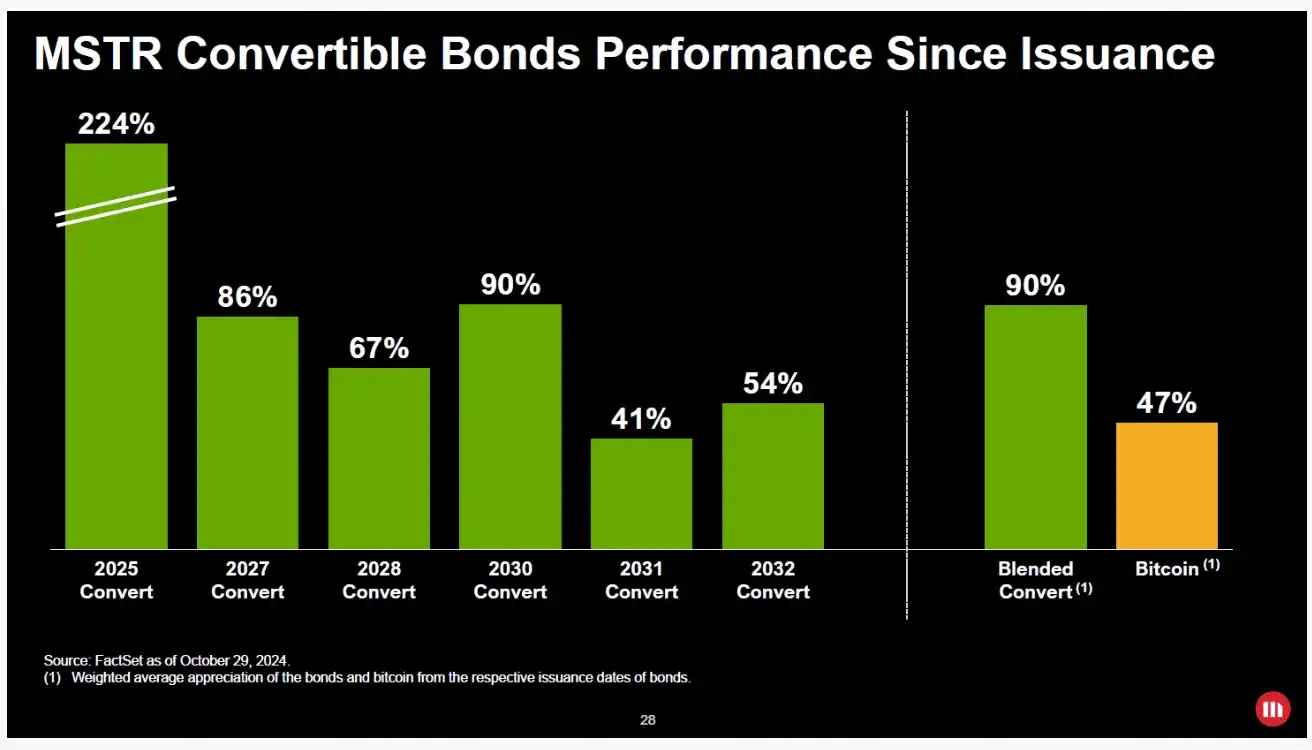
David Namdar: Looking back now, in the landscape of digital asset treasury companies, some enterprises have also attempted to use convertible bonds, but many companies are gradually moving away from this approach to avoid any structures that might put their balance sheets at risk. One reason is that the terms proposed by today's convertible bond investors are much harsher than the terms Michael Saylor received back in the day.
These convertible bond investors do not care what the underlying assets are, whether Bitcoin, Ethereum, or other crypto assets; they only care about their claim to the assets. Moreover, they often have the incentive to hedge their risk exposure by shorting the stock.
Therefore, I believe we will see these treasury companies reduce their use of convertible bonds in the future and explore more reasonable financing mechanisms to ensure that the interests of all investors remain aligned and avoid structural conflicts.
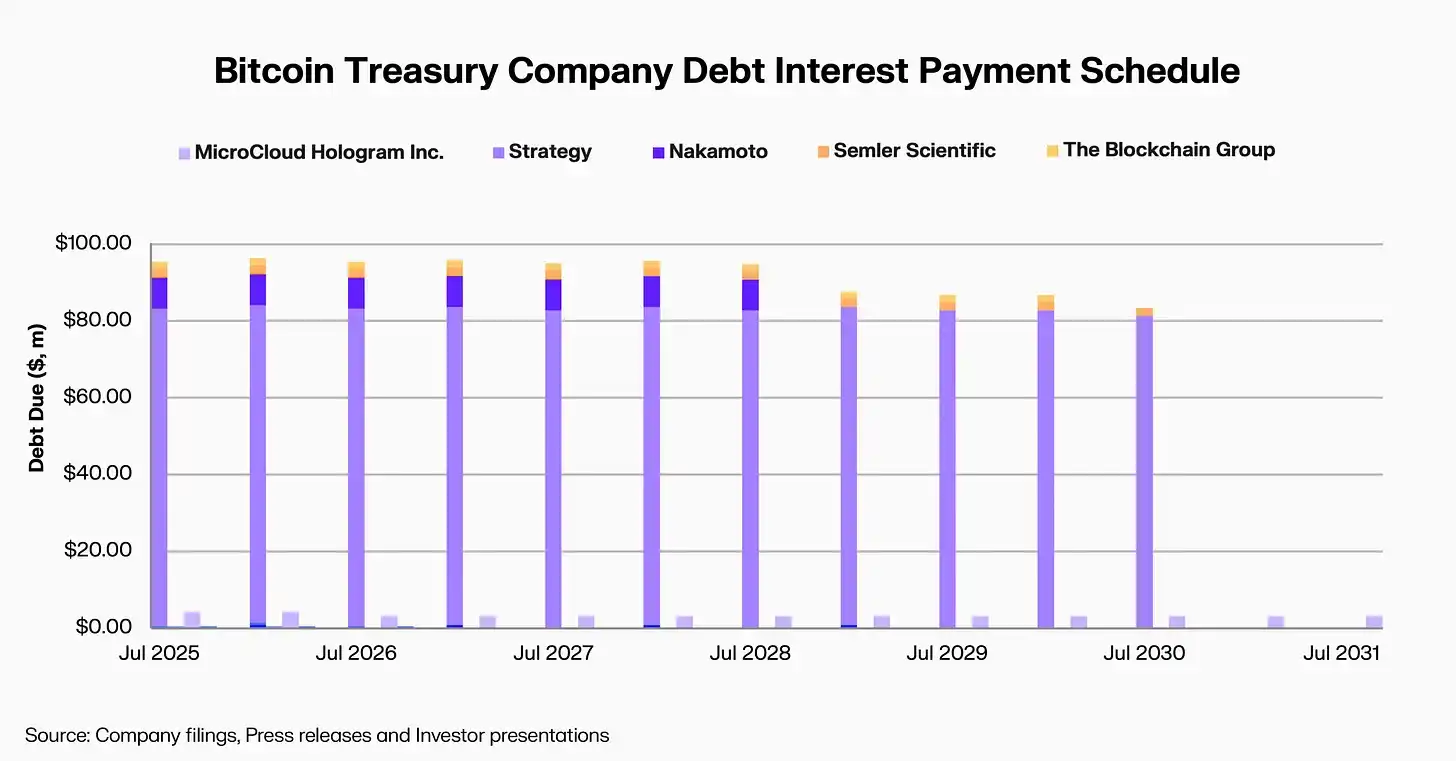
Lex Sokolin: Why do you think MicroStrategy's premium has been able to last for so long?
David Namdar: That's a good question. I think, first of all, he has been very successful in telling this story; the market believes he has the ability to continuously accumulate Bitcoin and increase the amount of Bitcoin per share, which is key for investors. As an investor myself, I have been paying attention to this area, intermittently investing in MicroStrategy over the past few years, as well as investing in MetaPlanet, and now I have invested in some new companies in this cycle. My investment logic is to select companies whose management teams can continuously increase the Bitcoin, Ethereum, or BNB holdings per share, and these teams will exist in the industry for the long term rather than short-term exploiting market frenzy for arbitrage.
Lex Sokolin: Can you talk about the changes in price dynamics over the past 6 to 12 months? I know we will soon discuss Binance and the debt issuance you led, but before that, I hope you can elaborate on what happened between May and October of this year.
David Namdar: The initiation of the debt financing wave this year mainly stemmed from two cases: Japan's MetaPlanet and Nakamoto, based in Puerto Rico, founded by David Bailey. Among them, MetaPlanet's performance was the most remarkable; it can be said to be the world's most successful Bitcoin treasury company, second only to MicroStrategy. They seized the unique advantage of the Japanese market—holding Bitcoin through a public company is more tax-efficient than holding it directly as an individual. With this, MetaPlanet once achieved a premium similar to MicroStrategy, with a premium range of 50% to 100%.

David Namdar: At that time, they held several hundred Bitcoins on their balance sheet, worth about $700 million. Subsequently, the market realized that quickly bringing Japanese capital into the crypto space through the public market was a shortcut, and MetaPlanet's stock price premium rapidly expanded, reaching 400% to 500%. The company took the opportunity to issue more shares, significantly increasing the Bitcoin holdings per share, ultimately accumulating Bitcoin worth billions of dollars.
In the U.S., Nakamoto was founded by David Bailey, one of the earliest Bitcoin holders I know, even earlier than Michael Saylor, and almost all active people in the industry today. He founded Bitcoin Magazine and BTC Inc. and was one of the main investors in MetaPlanet.

David Namdar: He basically followed MicroStrategy's playbook and incubated several Bitcoin treasury companies globally. He then founded his own Nakamoto, which truly made the market aware of the existing opportunities. He was very successful in raising awareness and funds—initially planning to raise $200 million but ultimately raising over $700 million. This move directly triggered a wave of Bitcoin treasury companies.
We saw Anthony Pompliano, Vivek Ramaswamy's Strive Asset Management, and other teams taking different paths, some through mergers and acquisitions of existing companies, and others through SPAC mechanisms. There was also the $121 million financing completed by Jack Mallers in collaboration with Cantor and Tether. Various strategies emerged in the market.
At that time, the core logic was: you are investing in a "pipeline," or a company issuing shares close to net asset value (NAV). If the market premium persists, then in a short time, you have the opportunity to gain a certain or even considerable return, as the public market would assign a premium to these treasury companies, thereby driving the entire flywheel effect.
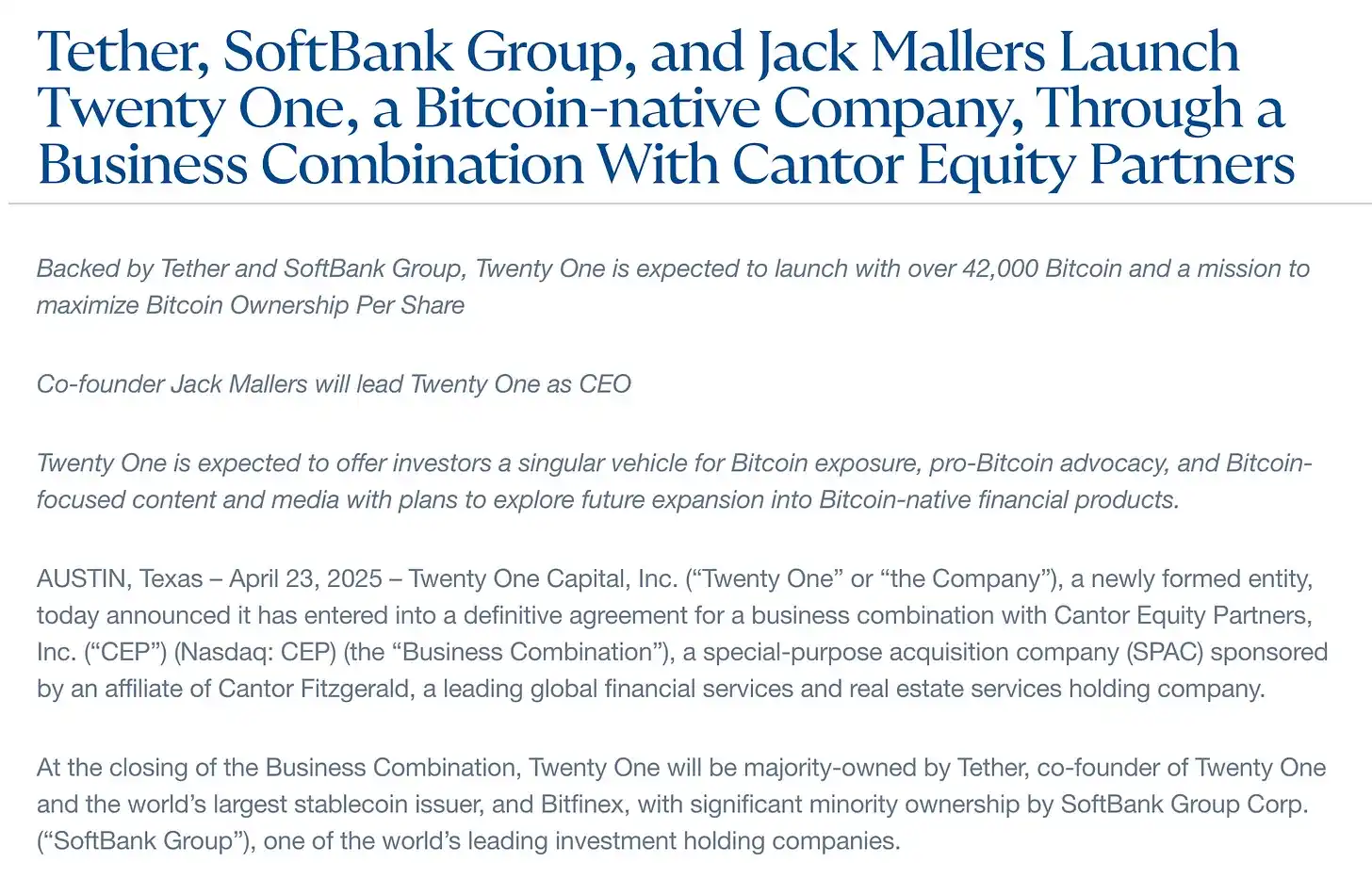
David Namdar: This was the initial logic and the reason that excited the market at that time. Subsequently, we saw two Ethereum treasury companies enter the market, with the largest two being Sharp Link and Bitmain. Among them, Bitmain is already an established player in the industry, while Sharp Link was originally a gambling company that was later acquired by Joe Lubin, co-founder of ConsenSys and one of the founders of Ethereum.
They successfully conveyed a vision to the market: Ethereum is a highly promising asset. At the same time, Wall Street fully capitalized on the momentum and enthusiasm surrounding stablecoins after the successful IPO of Circle. Sharp Link seized this window of opportunity, innovatively accumulating approximately $15 billion to $20 billion in Ethereum by selling shares at a premium, leveraging market speculation, and creating significant value for early PIPE investors and shareholders.
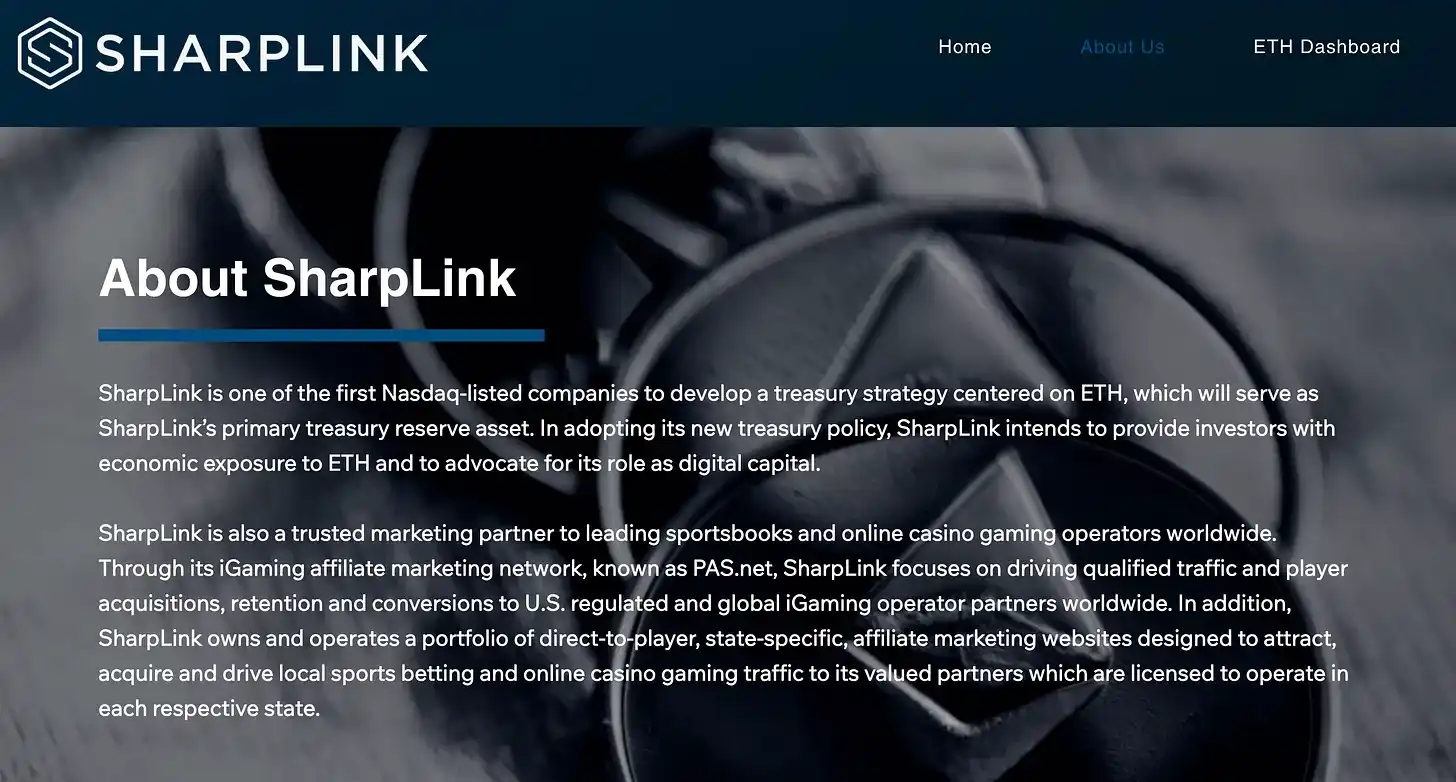
David Namdar: In the past few months, I feel the market is somewhat reminiscent of the ICO boom of 2017 and 2018. I have formed a judgment: if there is a capital inflow of $50 billion to $100 billion in the future, about 25% to 50% will concentrate in the top five to ten companies, such as MicroStrategy, MetaPlanet, or 21 Pro, Pro Cap Nakamoto, and Link BMR. The next 25% will flow to twenty to thirty medium-sized companies, while the remaining 25% will be dispersed among the long tail of 100 to 300 enterprises.
This distribution is very similar to the ICO period. At that time, there were also some surprising cases among long-tail projects, where certain projects managed to raise $30 million or even $100 million, some of which still exist today and have developed into meaningful businesses, but many ultimately disappeared.
The dispersion of capital across these different tiers has led to confusion among investors, and we have entered a common phase in the crypto market: from frenzy and excitement to hesitation, worry, and even fatigue. I believe the market is currently showing signs of fatigue regarding the "treasury strategy," which is why many related companies are still trading at a premium above net asset value (NAV).
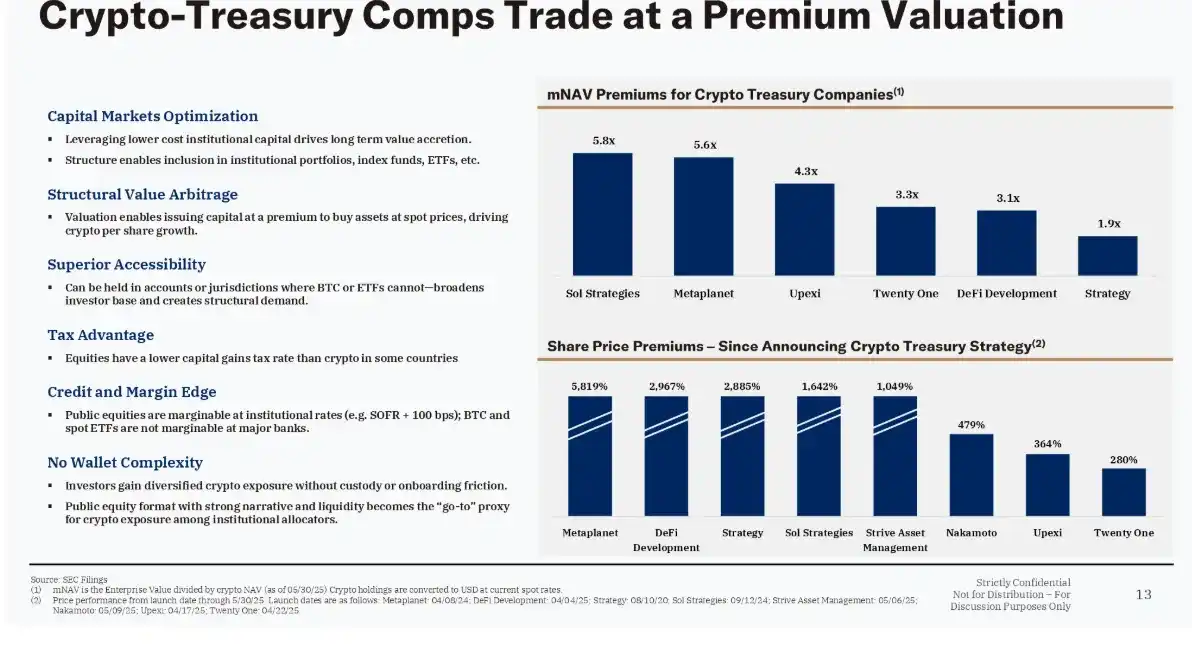
Why Choose the BNB Ecosystem
Lex Sokolin: In recent years, many different types of tokens and coins have adopted a model similar to "digital asset treasuries." In many cases, these treasury companies are replacing the roles originally held by foundations. Now, with regulatory bodies and the political environment becoming more favorable to cryptocurrencies, companies can directly promote protocol development in the form of commercial entities, without relying on non-commercial foundations, grants, or cultural frameworks that are at odds with actual goals. Although there is a lot of background information, I think it is very important.
Next, please talk about Binance, BNB, and your current focus.
David Namdar: Of course. I think the background is crucial; only those who have truly entered the crypto space or have personally experienced these cycles of excitement can understand where we are now and the reasons for our journey. You just mentioned the current regulatory environment, and I believe this is the most important factor driving everything. If the regulatory environment had been more robust in the early days, we might have already had a Bitcoin ETF, and even the Winklevoss brothers' ETF might have been approved. In that case, American investors could have earned $50 billion to $200 billion in Bitcoin, and the U.S. market would have seen more innovation, more companies, and a more active ecosystem.

David Namdar: Over the past year, this trend has also allowed some new crypto companies to successfully enter the capital markets, including Circle, Gemini, and Bullish. I believe there will be more crypto enterprises going public in the future. At the same time, we will also see more reasonable regulations introduced, creating more opportunities for existing crypto trading platforms in the U.S. and for some international platforms to interact with U.S. users. Recently, the CME or CFTC has released relevant regulatory explorations, considering allowing U.S. investors to access overseas crypto trading platforms, which could become one of the most significant news items in the next one to two quarters.
For me, regulatory issues have always been a focus. After Galaxy, I had the opportunity to serve as CEO of FTX US, Binance US, or some listed mining companies, but ultimately felt it was not suitable. I didn't want to put all my energy into a single trading platform or company; more importantly, the pressure from the regulatory environment could completely drive me out of the industry. I know someone who was operating a trading platform at the time and was ultimately completely overwhelmed, even exiting the industry.
In recent years, I have been broadly investing across the entire field, supporting some early participants who wish to sell their businesses or go public through IPOs or SPACs. Throughout this process, the story of Binance and BNB has always accompanied me. After investing in these companies, some close friends told me, "You have more experience in crypto and capital markets than many people, and you are better at telling and selling the 'treasury story' than many management teams or even bankers."
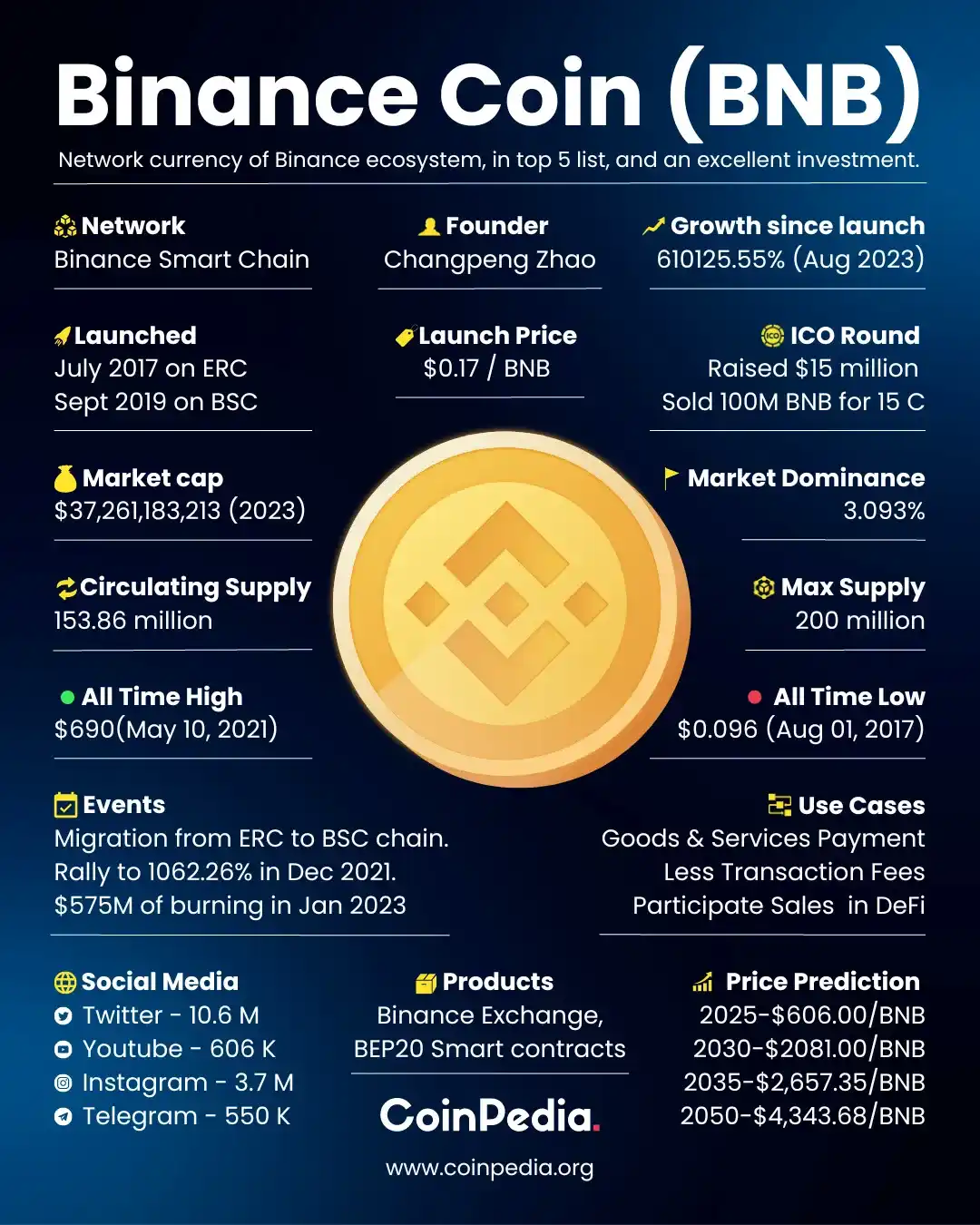
David Namdar: They indeed wanted me to operate a Bitcoin treasury company in any global market. But when I thought seriously about it, I felt I couldn't tell the story of Bitcoin with the same passion and conviction as Michael Saylor, David Bailey, or Simon from Metapan. In contrast, I am better at identifying trends in the global crypto market, revealing overlooked or undervalued opportunities, and helping people understand the true globalization of the crypto industry.
Therefore, operating a Bitcoin treasury company does not fit me, and I even find it difficult to invest sincerely. However, when I thought about running a treasury company focused on BNB, I felt it was a perfect fit. Ultimately, with the encouragement of a few close partners, I decided to take on this challenge. I am very grateful because over the past few months, this has become an exciting story. I believe that in the coming years, this will be a cause I am extremely passionate about and willing to invest my full effort into.
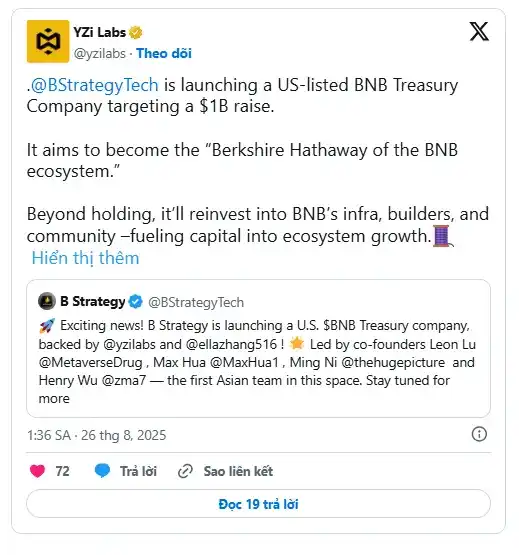
Lex Sokolin: Let's first lay the groundwork: What is Binance? How big is it? What is the user count? Can you help us make a horizontal comparison, such as with companies like Coinbase? Additionally, what is the BNB token?
David Namdar: Binance is undoubtedly the largest cryptocurrency trading platform in the world. To give you an idea, according to its official website, the user count has surpassed 290 million. In comparison, Coinbase's user base is around 20 million to 40 million, Kraken is about 10 million to 20 million, and Gemini is also in that range. In other words, Binance's scale may be 5 to 15 times that of Coinbase or other U.S. trading platforms.

David Namdar: Binance is not only the largest cryptocurrency trading platform globally, but it also leads in trading volume across almost all trading pairs, accounting for nearly 40% of global crypto trading volume. From another perspective, if we look at other industries, such as social media, search, or hardware, the leading companies like Facebook, Google, and Apple are all U.S. companies, publicly listed in the U.S., and have a large number of U.S. users. However, in the crypto industry, the largest trading platform, Binance, operates entirely outside the U.S. and does not have U.S. customers.
If Binance could enter the U.S. market and attract U.S. users, its scale would be even larger. However, the current reality is that U.S. investors cannot invest in the equity of this company, and U.S. users cannot directly use its services. I can't think of any other industry where the largest company operates completely outside the U.S. system.
Lex Sokolin: So, how does the BNB token function? How does it accumulate value? How does the DAT (Digital Asset Treasury) derive value from the token?
David Namdar: When Binance rose in 2017 and 2018, it was the first to launch a trading platform token, which is different from Bitcoin or Ethereum. The initial purpose of BNB was to provide users with trading fee discounts. Some have pointed out that this is very accurate: to date, trading remains the most successful and core application scenario in the crypto world. For some, trading means speculation; for others, it is value exchange or investment growth. After all, this asset class has grown from hundreds of billions to about $4 trillion today, and the importance of trading is undeniable.
BNB was initially used to pay for trading fee discounts, then upgraded and migrated, developing into BNB Chain over the past five years, forming a vibrant ecosystem that still maintains a close connection with Binance. It is estimated that among Binance's 290 million users, about 80% to 90% use BNB to pay for trading fees. From this perspective, BNB may be one of the most widely used cryptocurrencies globally, even though many activities occur off-chain, this still benefits BNB in the long term. Additionally, BNB allows users to participate in other activities within the ecosystem, such as airdrops, discounts, and rewards.
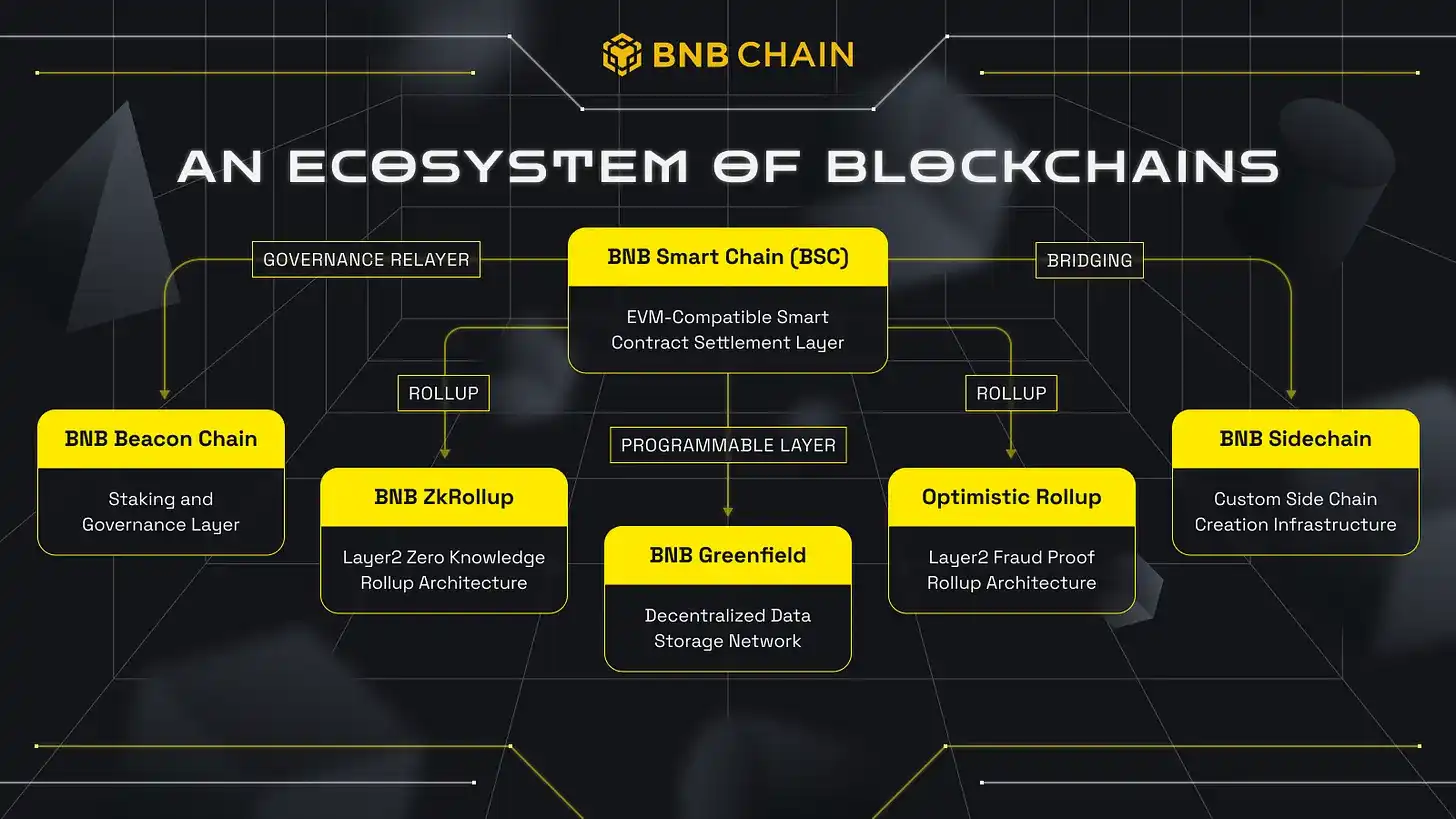
David Namdar: The value of the BNB token comes not only from trading fee discounts but also from its unique deflationary mechanism, which differentiates it from Bitcoin and Ethereum. Each Ethereum transaction generates "Gas" fees that ultimately go to miners; in the BNB ecosystem, each transaction triggers a small burn mechanism that reduces the total supply of tokens. Furthermore, all trading fees are used for quarterly burns, further shrinking the supply.
For example, the average burn scale over the past four quarters has exceeded $1 billion per quarter, and I expect this quarter to set a historical high, possibly exceeding $1.5 billion, or even reaching $2 billion in BNB burn value. This ongoing burn not only creates scarcity but also reinforces the long-term value logic of the token.

David Namdar: Although these tokens are not stocks, they possess similar mechanisms to some extent. For example, if you look at stock buybacks, like Warren Buffett's approach at Berkshire Hathaway or other large companies, when a company is profitable, it can choose to pay dividends, reinvest, or buy back shares to reduce supply. The mechanism of BNB is similar; it achieves supply contraction through quarterly burns, reducing the total token supply by about 3% to 6% each year.

Lex Sokolin: Is it important if the debt trading price is below net asset value? If it is important, what tools would you use to address it?
David Namdar: Let me take a step back and explain why we are launching this project and my perspective on it. My positioning for DAT (Digital Asset Treasury) and the opportunities it brings is as a medium to long-term investment. I have been investing in these companies and believe in their potential. For instance, MetaPlanet was one of the best-performing stocks in Japan last year and also one of the most liquid stocks, but the groundwork for this story took a year or two to manifest. Looking at MicroStrategy, it took five years for the market to truly recognize the significant cumulative effect of its Bitcoin holdings.
So, when I think about this model, my logic is that BNB is a highly valuable asset, and I want to hold more of it while helping more people gain exposure to it. Especially in the U.S. market, the availability of BNB is very limited, and this gap is not only a current obstacle but could also become a catalyst for driving value in the future.

David Namdar: U.S. investors not only find it difficult to participate directly in the BNB ecosystem, but even purchasing the underlying assets is challenging. Therefore, our goal is to create a compliant investment tool—a company listed on NASDAQ that allows investors to gain exposure to BNB through this channel.
Reflecting on my early experiences promoting a Bitcoin ETF, I still feel regret: due to the SEC and other regulatory bodies refusing to approve it, U.S. investors missed the opportunity to invest in Bitcoin when it was only $100 to $300 through an ETF. Now, BNB is similarly difficult to access in the U.S. market, which means U.S. investors are once again excluded from a thriving ecosystem.
I hope to help more people recognize this opportunity through this project and provide them with a medium to long-term investment channel.
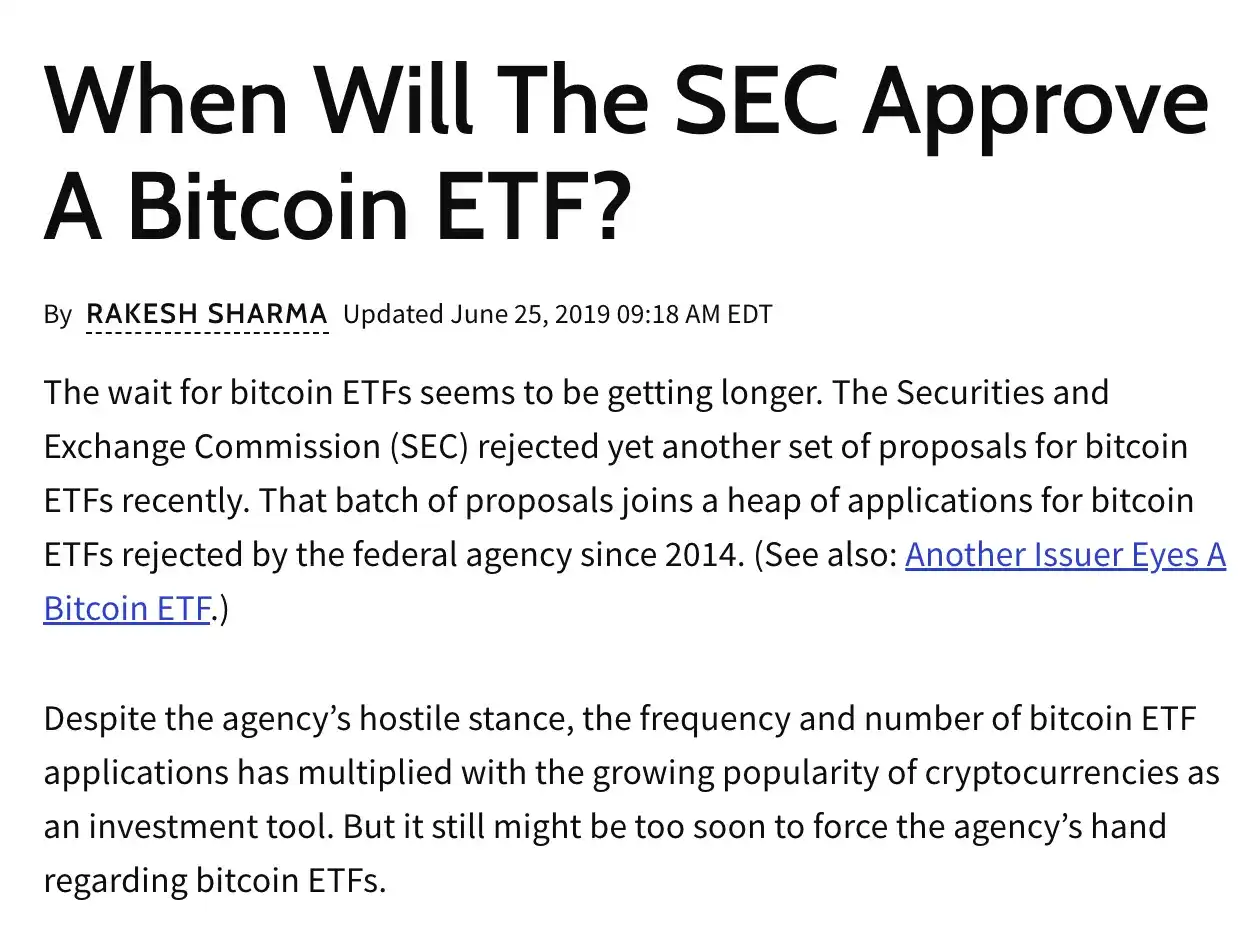
David Namdar: From a market dynamics perspective, the crypto industry has always exhibited cyclical fluctuations: there are periods of frenzy, as well as panic and pessimism. Just last week, we experienced one of the largest sell-offs in crypto history, possibly the largest ever. But surprisingly, the market rebounded quickly and strongly, restoring confidence, with BNB even breaking new highs after the crash, demonstrating remarkable resilience.
This also reminds us that the volatility of crypto assets has always been one of their core characteristics. When an asset is in a high-growth phase, volatility can actually be a positive signal. The key is to extend the perspective and think about the future direction. If someone believes this is the end of crypto assets and that they will not become an important part of society and the global financial system, they are clearly overlooking the larger trend.
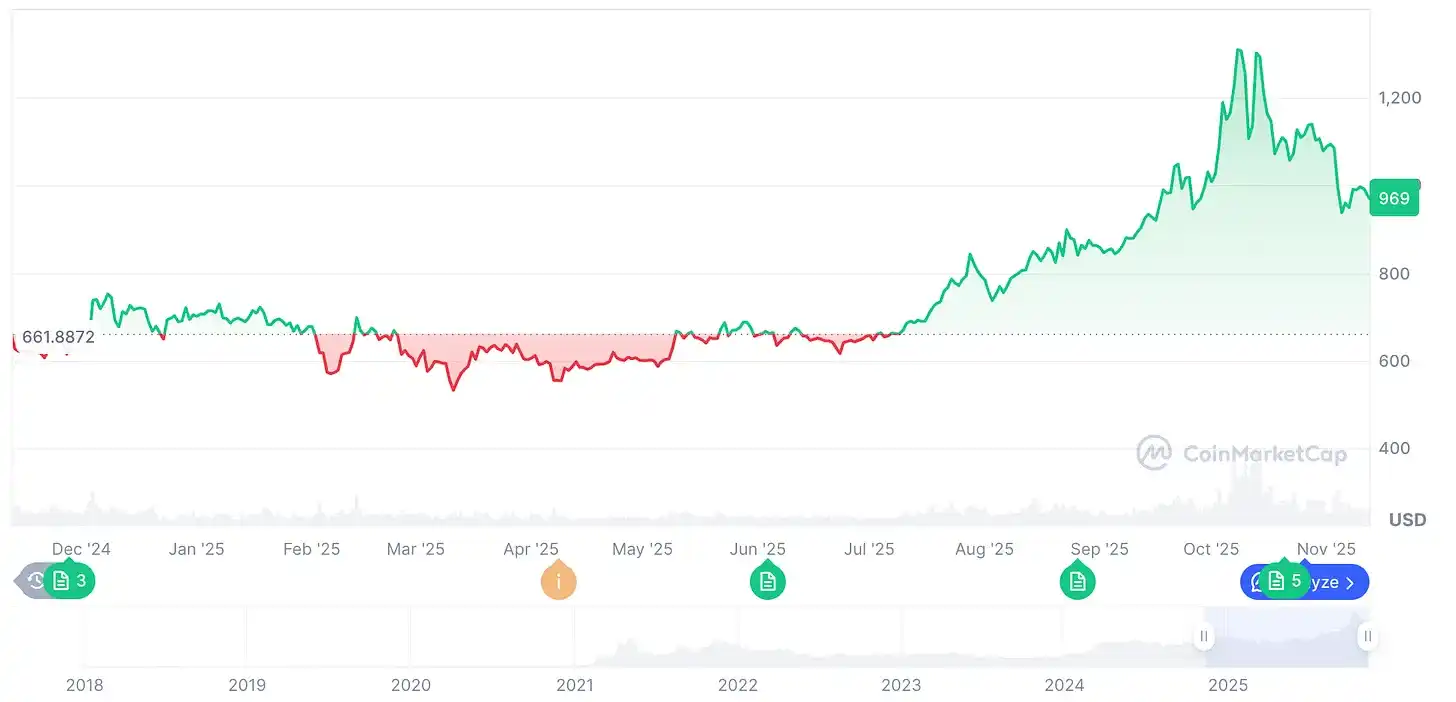
David Namdar: If you believe that crypto assets will become a larger asset class in the future, then short-term premiums or discounts are not the most critical issues. What truly matters is that treasury companies must focus on enhancing the net crypto asset value per share—whether it’s Bitcoin, BNB, or Ethereum—while ensuring these assets are not put at risk.
This is also why I am very cautious and unwilling to adopt convertible bonds or any financing methods that could harm the balance sheet. Because in ecosystems like Ethereum, Solana, and BNB, there are staking, yield, and other income opportunities. Even if the stock price is below net asset value at a certain stage, through these earnings and buying back shares at a discount, value can still be created, enhancing the value of each BNB share and ultimately benefiting all investors.
In April and May of this year, at the Bitcoin conference in Las Vegas, what impressed me most was when Michael Saylor was asked what he would do if the premium disappeared and the stock price fell below net asset value. His response was very calm: "Assuming we hold $50 billion in Bitcoin, and someone is willing to sell shares at a 20%, 30%, or even 50% discount, I would issue preferred stock to buy back those shares. This way, other shareholders would benefit from my discounted buyback."
The biggest insight I gained from this is that the key to successfully operating a treasury company is to be able to access capital regardless of market conditions and to continuously enhance value in the medium to long term, allowing this "appreciation cycle" to take effect.

Lex Sokolin: That's great. David, thank you very much for bringing such a broad discussion. I am very excited about what you are doing. If our audience wants to learn more about you and your company, where should they go?
David Namdar: I will try to share everything on my Twitter @Namdar, as well as the company account @BNB Network Co, and our website BNC network. Yes, these are good starting points.
Lex Sokolin: Great, glad you could come.
David Namdar: I am grateful too; it has been really wonderful.
免责声明:本文章仅代表作者个人观点,不代表本平台的立场和观点。本文章仅供信息分享,不构成对任何人的任何投资建议。用户与作者之间的任何争议,与本平台无关。如网页中刊载的文章或图片涉及侵权,请提供相关的权利证明和身份证明发送邮件到support@aicoin.com,本平台相关工作人员将会进行核查。
